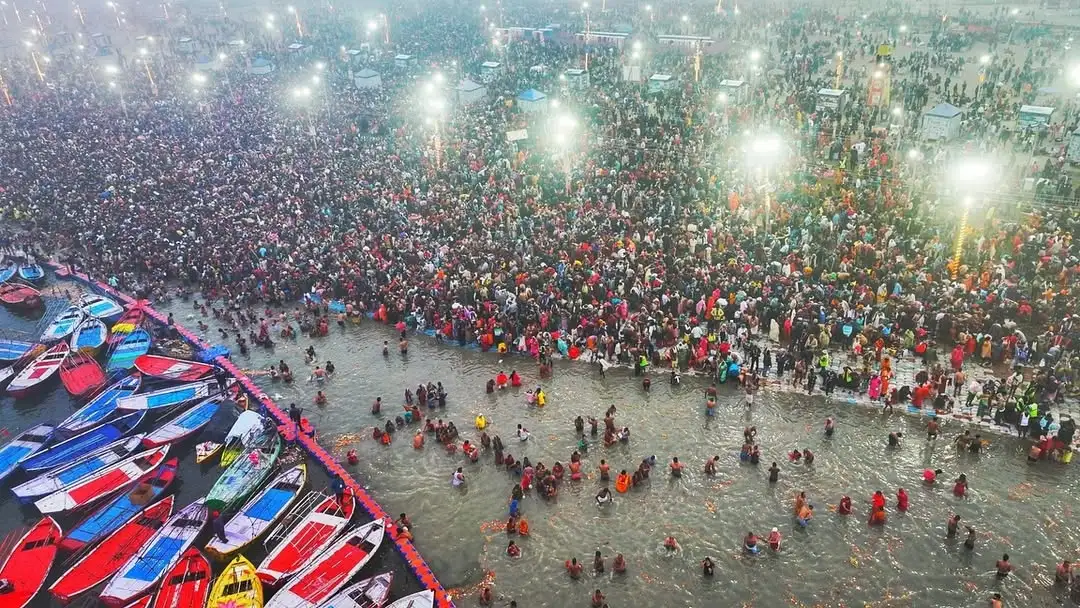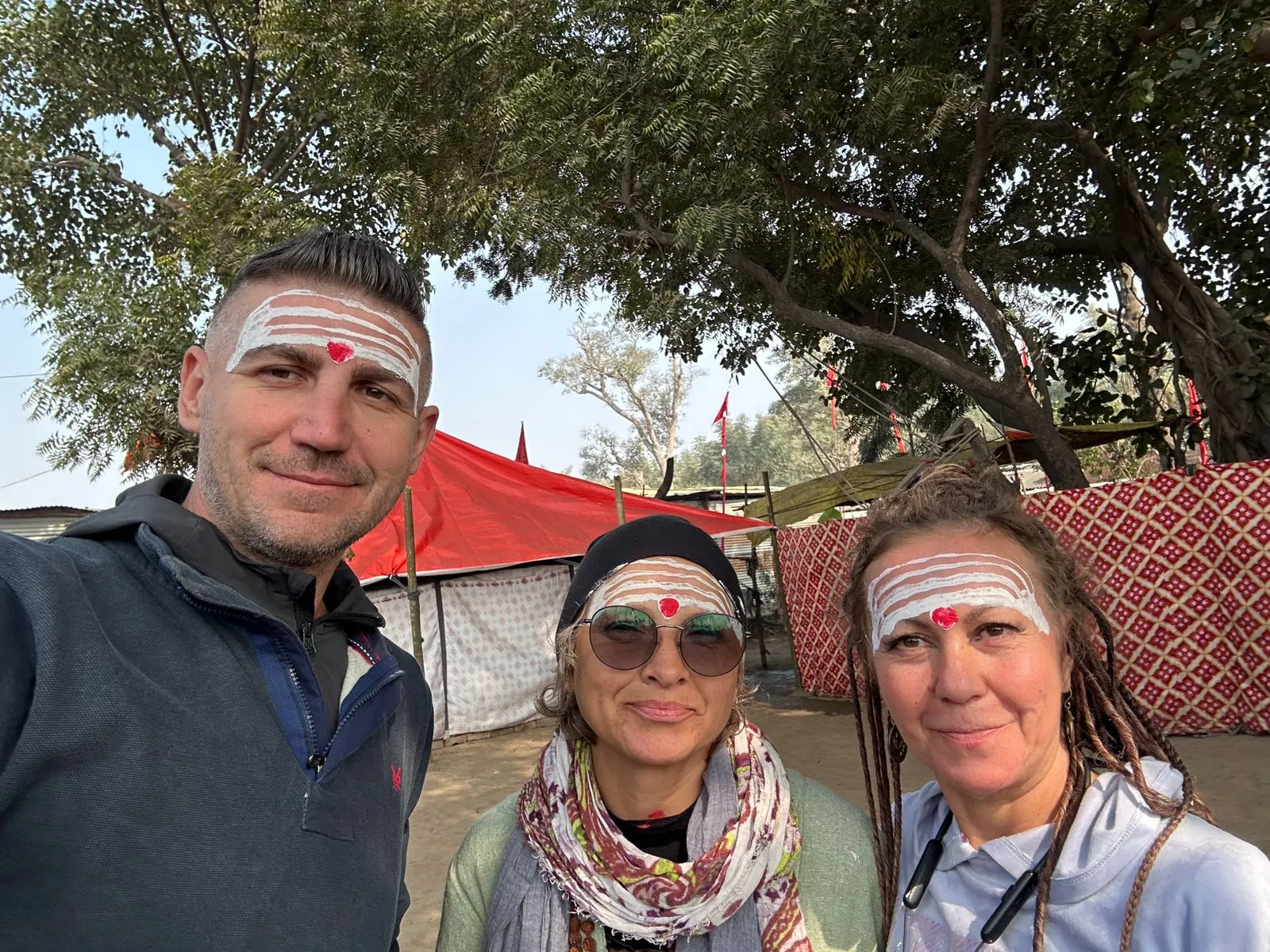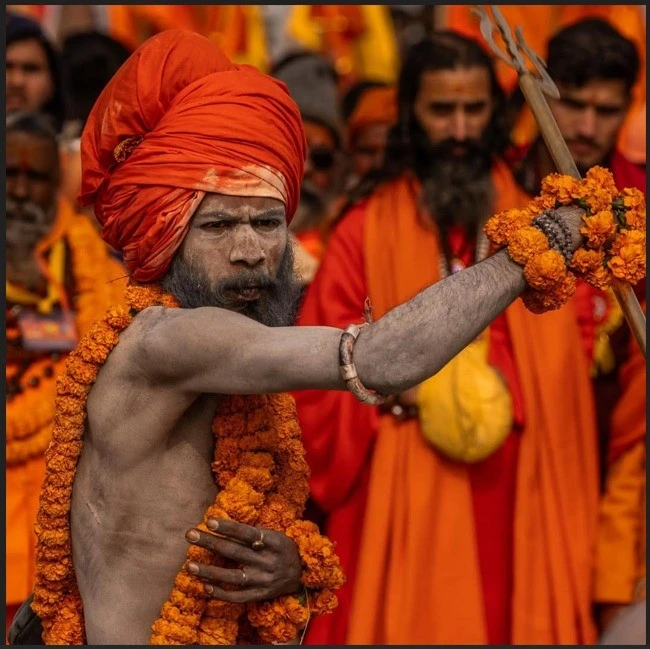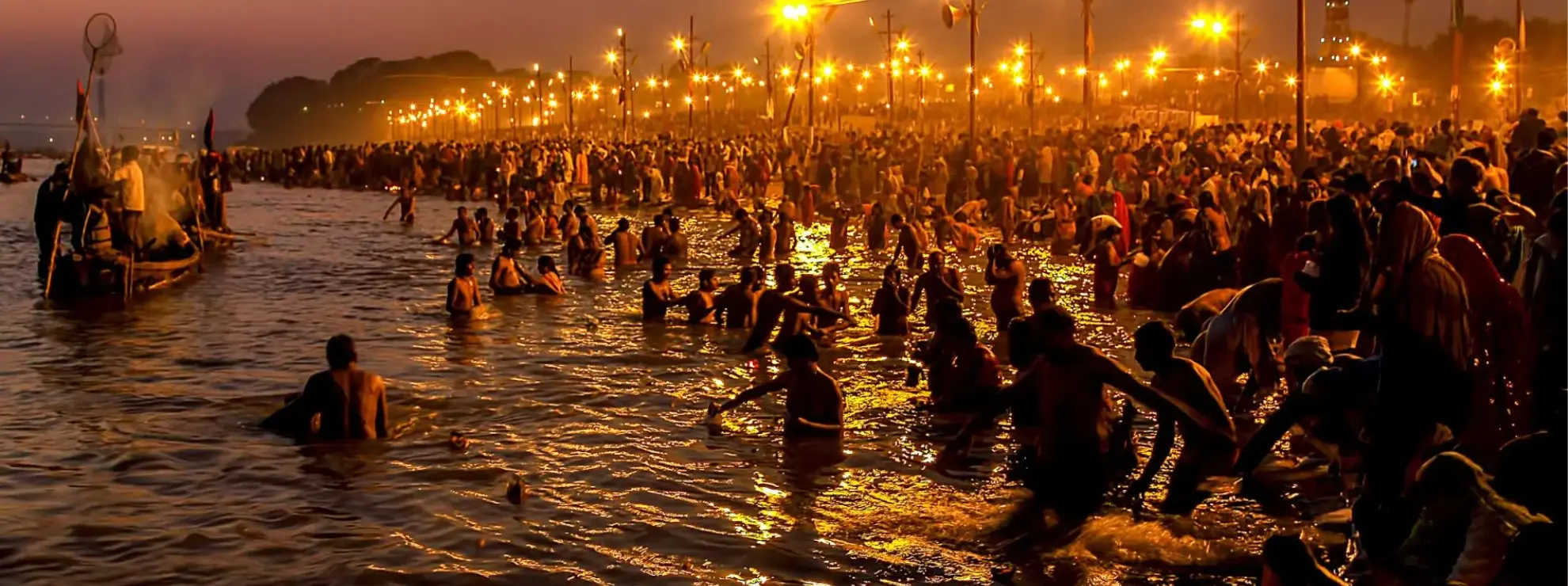(January 14, 2025) At the break of dawn, Evgenii Grudev made his way through the dense fog and chilly air to step into the biting cold waters of the Triveni Sangam. Even the hostility of winter could not keep the warmth from his heart as he emerged from the shimmering waters moments later. For Evgenii and millions of others, taking a holy dip at the Maha Kumbh Mela 2025, the world’s largest spiritual gathering, is the experience of a lifetime. Evgenii and his friends, Olena Leschchenko from Ukraine, and Victoria Gerlinsky from Kazakhstan are among the scores of international devotees who arrived in Prayagraj for the Maha Kumbh mela, which began with ‘Shahi Snan’ on the auspicious occasion of ‘Paush Purnima’ on Monday.
American billionaire businesswoman executive, philanthropist Laurene Powell Jobs, the widow of Steve Jobs, is among those who took the holy dip at 4 am on Monday. Accompanied by her 40-member team, Laurene, who was give the name ‘Kamala’ by her guru Swami Kailashnand Giri, landed at Prayagraj on Saturday night. She will be staying at the camp till Jan 15 before heading back to the US to participate in the swearing-in ceremony of UP President-elect Donald Trump. The Triveni Sangam has seen a host of international celebrities over the world, from the Dalai Lama to actor Richard Gere and director David Lynch.
Several international devotees along with lakhs of Indians were among the hundreds of sadhus who have conglomerated for this ancient tradition, which has even been mentioned in the Bhagavad Gita. The waters of the Triveni Sangam are the point of convergence of the Ganga, Yamuna and mythological Saraswathi, and the holy dip marks the start of the ancient festival. During the next six weeks, devotees will take part in elaborate rituals, prayers, and religious processions with elephants, as well as horse-back parades and chariots.This year, the festival will see devotees from 182 countries.

The spiritual seekers
“We are spiritual people and wanted to experience the Maha Kumbh. It’s an experience like no other,” Zhenya, a Russian now living in Goa, tells Global Indian. The 4 am dip he took today is something he will cherish forever. “There are so many sadhus here. Being in their midst is very soothing. They offer us Prasad (food) everyday,” he adds. Zhenya and his friends arrived at Prayagraj four days ago, and have been visiting temples and meeting gurus as the Maha Kumbh drew near.
For Zhenya and his friends, the pursuit of moksha began with yoga. Zhenya has lived in Goa for the last couple of years, where teaches yoga. His friends are practitioners too, he says. They have been camping out in a makeshift tent not far from the main venue, which is spread across 4,000 hectares. “Yoga is everything for us. It led us on to a spiritual journey in a great country like India,” he says. And being part of India’s many festivals is all part of the experience. “We feel the energy, and we feel connected. Back in my country, we don’t have anything like this,” he adds.
The Maha Kumbh Mela, which begins at the start of Makara (the month of Capricorn, the Western zodiac), takes place in the peak of winter, and puts the endurance of these spiritual seekers to the test. “My friend Olena has fallen sick due to the intense cold but she will recover soon,” says Zhenya, who hails from Anapa, a town in Krasnodar Krai, Russia, located on the northern coast of the Black Sea. On the day they arrived, the temperature was around eight degrees. “It’s dark, foggy and very cold. The visibility is hardly three metres,” he says.

Zheya and his friends
Seeking Moksha at the Maha Kumbh
“I am here in search of moksha,” says Francisco, a Brazilian who has arrived in India for the Maha Kumbh 2025. “This is my first visit to the country,” he says. Francisco is among a group of tourists from Brazil, Spain and Portugal, all of whom began planning their holy visit to the Maha Kumbh months ago.
A devotee from South Africa’s Cape Town, Nikki said she felt the powerful vibes at Maha Kumbh. “I feel blessed after taking the dip here. The power, energy here cannot be described in words,” she said, while appreciating the massive efforts made by the state administration in keeping the venue clean, safe and all decked up. “The people here are friendly, we had a wonderful experience,” added Nikki.
Jitesh Prabhakar from Germany had made his plans to visit Kumbh well in advance. “I was eager and excited to take the holy dip. It was once in a lifetime experience,” says Jitesh, who is originally from Mysore and is now a German citizen. He visited the Mela along with his wife, Saskia Knauf and son Aditya. “I practice yoga every day and have a deep connection with this place. One should travel towards inner self,” he said.
Another Russian national Vladislav was excitedly taking a stroll across the Sangam area when GI got in touch with him. “This place has all the positive vibes, which I can feel. The energy here is unlike anything I have experienced before,” says Vladislav.

Global prominence
Uttar Pradesh Chief Minister Yogi Adityanath has said that the Maha Kumbh to be held from January 13 to February 26, will elevate India’s ancient cultural and religious traditions to global prominence. This year, the Maha Kumbh has an added significance to it as it falls during a rare celestial alignment that occurs only once in 144 years. It is being celebrated after 12 years, and over 45 crore devotees are expected for the event, which will showcase India’s rich cultural heritage and spiritual traditions.
Prime Minister Narendra Modi on Monday extended his wishes to all pilgrims and tourists as the Maha Kumbh mela began. “A very special day for crores of people who cherish Bharatiya values and culture! Maha Kumbh 2025 commences in Prayagraj, bringing together countless people in a sacred confluence of faith, devotion and culture. The Maha Kumbh embodies India’s timeless spiritual heritage and celebrates faith and harmony,” he said.
Kumbh’s Economics
The mela is expected to bring a massive economic boost to Uttar Pradesh, which had allocated around Rs 7,000 crore budget for the mega event. It is projected to generate up to Rs 2 lakh crore in economic growth for India’s most populous state. According to estimates, the event may generate Rs 2 lakh crore if each of 40 crore visitors spends an average of Rs 5,000. If the average expenditure (per person) rises to Rs 10,000, the total economic impact could reach Rs 4 lakh crore.
Drones and AI
Security is all-important and the state government has spared no expense. Underwater drones, capable of diving up to 100 metres, have been deployed across the city for round-the-clock surveillance of the Sangam area.

Prayagraj: Commandos conduct a mock drill ahead of the Mahakumbh 2025. Photo: Hindustan Times
Tethered drones – capable of reaching heights up to 120 meters – have also been deployed to provide aerial views to identify swelling crowds or areas requiring medical or security intervention. At least 2,700 cameras with artificial intelligence (AI) capabilities that will provide real-time monitoring and facial recognition technology will be used at entry points.
Authorities have set up 150,000 tents to accommodate the pilgrims, along with additional toilets and sanitation facilities. At least 450,000 new electricity connections have been installed, with the Kumbh expected to drain more power than what 100,000 urban apartments in the region consume in a month.
Another highlight of the mega event is the Kumbh Sah’AI’yak chatbot, a cutting-edge AI tool, designed to provide real-time guidance and updates to devotees attending the Maha Kumbh Mela 2025. It will act as a digital companion for the millions of devotees. Some of its key features include multilingual support, interactive engagement, personal navigation, and cultural insights. It can be accessed through the official Maha Kumbh 2025 mobile app or via WhatsApp.
Read a similar story of the unseen Kumbh Mela connection of Steve Jobs.

